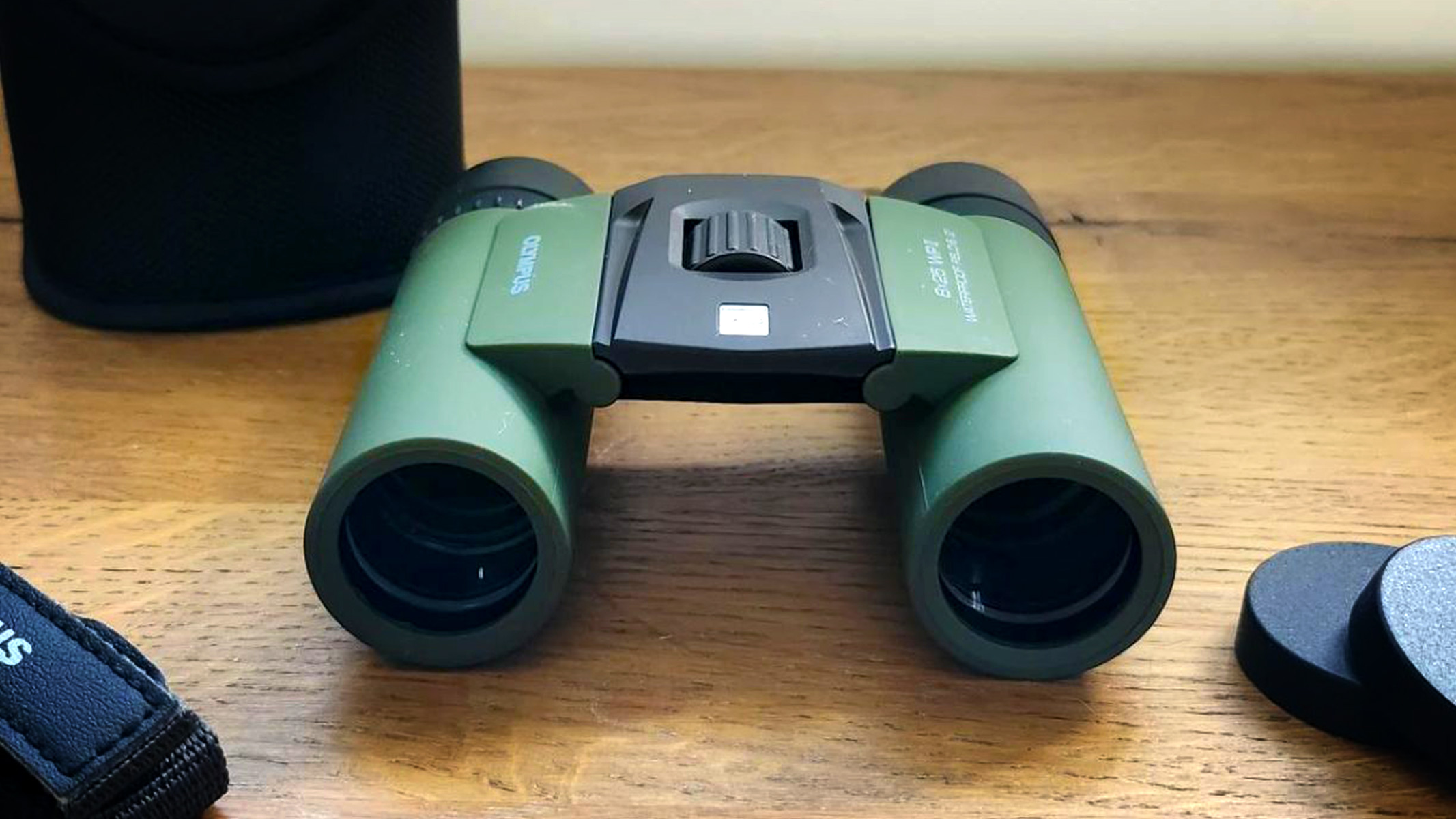
While the Olympus 8x25 WP II shouldn’t be the first choice for serious skywatchers looking to observe a wide range of solar system and deep-sky targets these compact binoculars boast uninterrupted sights thanks to a fog and waterproof design that's guaranteed to last observers for many observing sessions to come.
Stylish and versatile, the Olympus 8x25 WP II binocular is built with the outdoor explorer in mind, featuring a nitrogen-filled fogproof and waterproof design that promises to breeze through even the most inclement weather, it is also lightweight and comfortable to hold thanks to a rubber-coated finish and weighing in at 260 grams (9.2 oz). For even more ease of use whilst traveling, the Olympus 8x25 WP II can also be folded away and slotted into the supplied carry case.
Olympus 8x25 WP II binocular review
Olympus 8x25 WP II binocular: Design
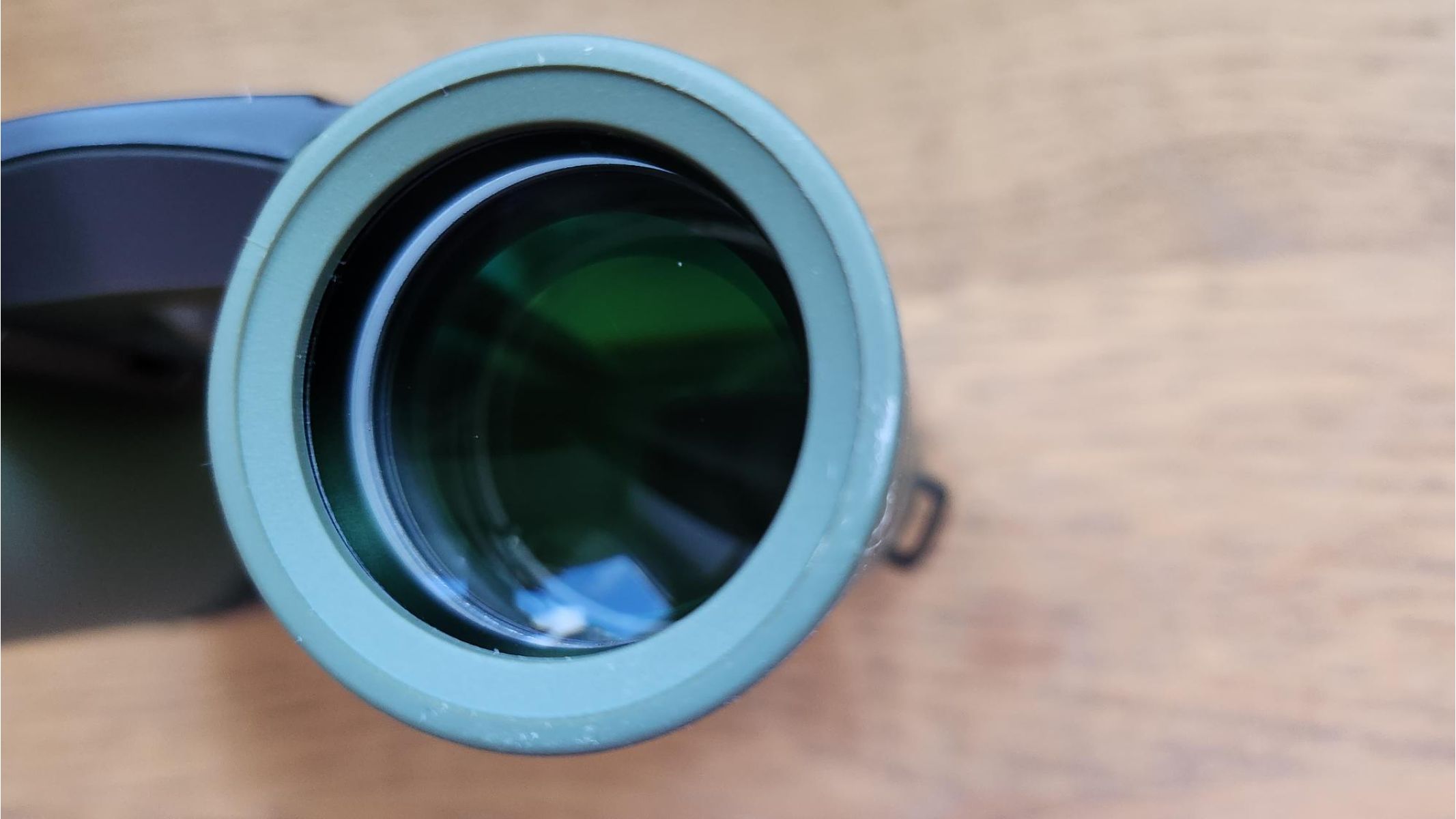
- Excellent, high-quality housing
- Lightweight, portable design
- Water and fog proof
- Very good eye relief
Out of the box, the Olympus 8x25 WP II certainly lives up to the hype. These binoculars are a delight to hold. They may be light — and we discovered that our arms didn't get tired when sweeping across the night sky for a good five minutes at a time — but manufacturer Olympus hasn't skimped on the quality. No part of the housing felt flimsy to the touch, promising to last for many observing sessions to come; whatever the conditions.
March proved to be dogged with poor weather, with many a rain shower as we moved into April. While observations of a selection of targets were off the cards for several nights, we took the opportunity to test just how waterproof the Olympus 8x25 WP II really is. Grabbing a waterproof coat before preparing the binocular for observations, we headed outside to a torrential downpour, which further contributed to 54mm of rain that week.
Visibility was poor and we braced ourselves against a cooler temperature of 6 degrees Celsius. With aggressive winds buffeting us from the south, we were forced to take shelter against a wall while training the binoculars on a lamppost. Except for a few stray raindrops falling onto the objective lenses, which we quickly wiped away with our microfibre cloth, the Olympus 8x25 WP II was not affected by the terrible conditions, no leaking into the housing was detected and the optics performed with ease, with the nitrogen-filling keeping our field of view free of fog as we periodically migrated to and from the warmth of the indoors.
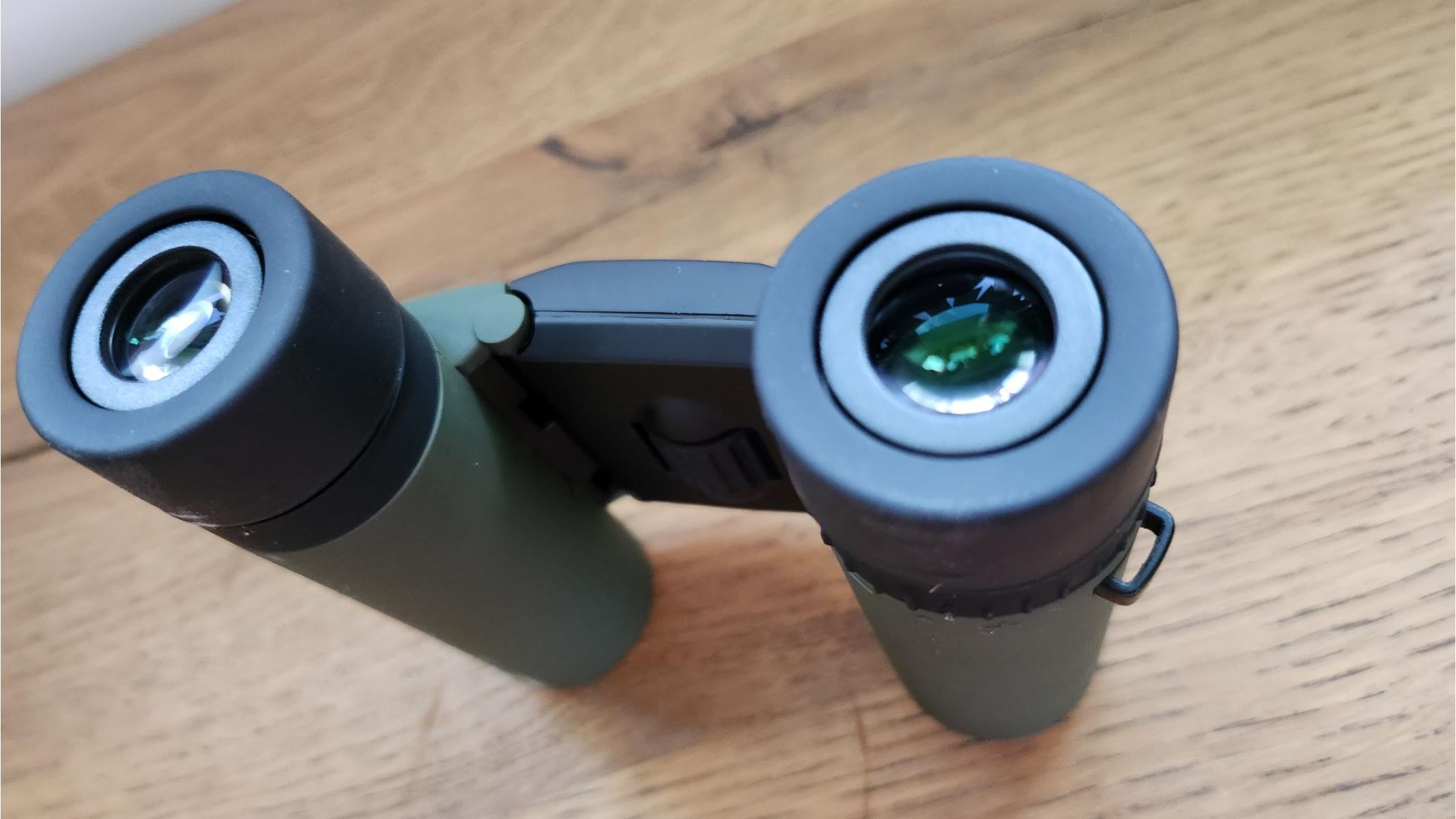
Magnification: 8x
Objective lens diameter: 25mm
Angular field of view: 6.2 degrees
Eye relief: 15 mm / 0.6 inches
Weight: 260 g / 9.2 oz
We took ourselves out of the lashing rain and wind to study the eye relief of the Olympus 8x25 WP II. Boasting a decent 15mm, we put spectacles on to appreciate the generosity of the eyecups, which can be twisted out when the binoculars are in use. We are even further delighted with the lack of fiddliness of the eye shield feature: since with some models of binocular, we have been forced to fold the rubber eyecups back to achieve comfortable views.
In the way of supplied accessories, the lens caps fits snuggly to protect the glass and the neck strap could be adjusted with ease. A slight niggle is that the material of the strap could have been better. After some time it felt rough against the skin, so we advise either upgrading to a padded option or putting the collar of your coat in between the back of your neck and the material. Overall though, we had no concerns with the accessory's ability to support the binoculars' weight.
Olympus 8x25 WP II binocular: Performance
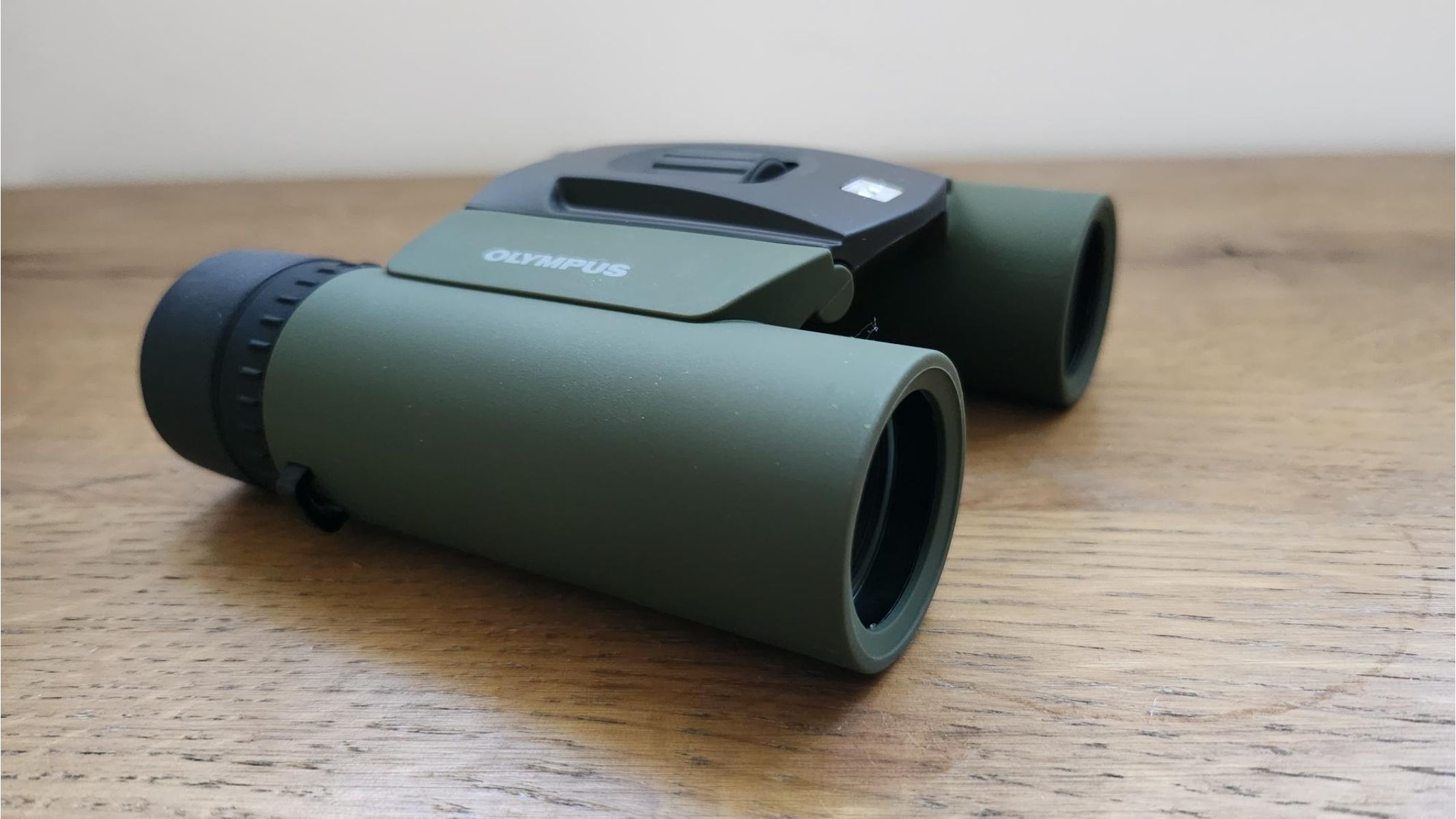
- Good views of bright night-sky targets (of at least magnitude +4.0)
- Small, crystal clear views with good contrast
- Fair views in less-than-perfect observing conditions
Drying the binoculars after our final venture into the outdoors, we waited for a few evenings before it was clear enough to test the mettle of the Olympus 8x25 WP II's optical system.
The manufacturer specifications promise a field of view of 108m at 1000m, an actual field of view of 6.2 degrees, and an apparent field of view of 49.5 degrees. With a magnification of 8x and aperture of 25mm, the Olympus 8x25 WP II isn't necessarily a skywatcher's first choice for observing the night sky, but we were cautiously optimistic — especially when it came to viewing the brighter, easy-to-access solar system and deep-sky targets with magnitudes of at least +4.0.
A waning gibbous moon with 17% illumination is easy pickings for the Olympus 8x25 WP II, and we were delighted with how much more we could see, and comfortably, compared to the unaided eye. To give a feel of what is visible through the eyepieces, the binocular's angular field of view is 6.2 degrees and, with a full moon having an angular size of roughly half a degree, the view is able to fit 12 full moon widths.
This means that views are small, but we could still appreciate the detail and clarity of our chosen target. Our eyes skimmed the lunar mare Oceanus Procellarum (Ocean of Storms), before sweeping along the terminator to take in the rugged terrain. The binocular afforded us the opportunity to spot small and clear sights of craters Kepler, Grimaldi and Byrgius with ease. No defects in the optical system, such as color-fringing is visible along the moon's limb and the contrast and clarity is seamless for an excellent proportion of the field of view.
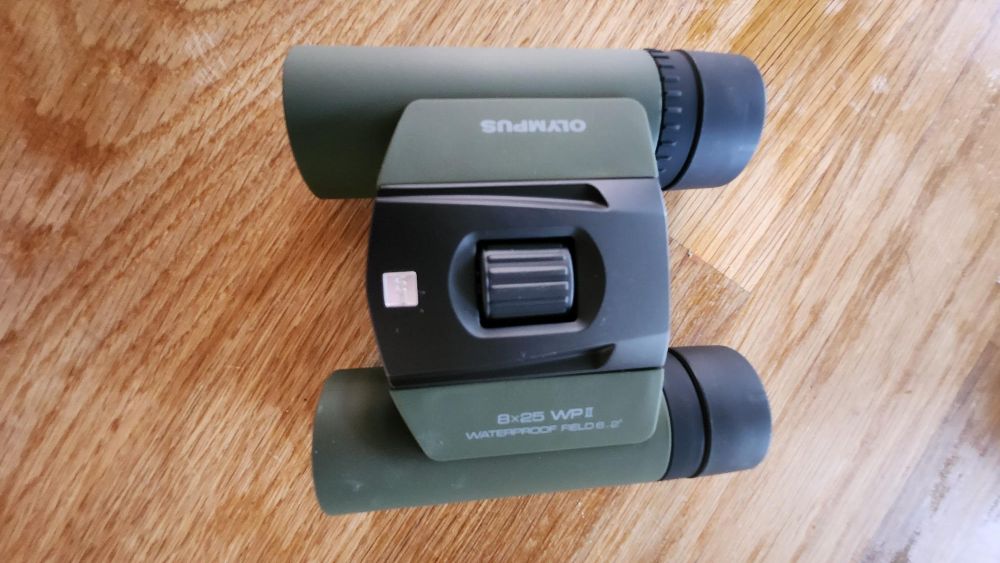
Dazzling at magnitude -4.1, we headed west to take in the second planet from the sun, Venus. Admittedly and, as expected, the views weren't massively breathtaking due to the planet's largely featureless disk, however, we did enjoy the magnified view of the fierce luminosity through the binocular's optical system.
The constellation of Orion (the Hunter), could be caught before it dipped below the south-western horizon and we were rewarded with a plethora of stellar targets. The fuzzy glow of the +4.0-magnitude Orion Nebula (Messier 42), with a few members of the Trapezium Cluster at its heart, could be observed with beautiful contrast and clarity, while Orion's Belt — featuring the stars Alnitak, Alnilam and Mintaka — were visible in the same field of view with true brilliance; a sight that's sure to delight observers with the Olympus 8x25 WP II at their disposal.
Lazily sweeping the heavens with the Olympus 8x25 WP II as the night sky continued to get darker, we were treated to sections of sky, populated with further faint stars, offering more to see over naked eye viewing, especially in slightly light-polluted conditions. The nitrogen-filled design continued to perform at its best, with no water or fogging hindering our views throughout our sessions.
Olympus 8x25 WP II binocular: Functionality
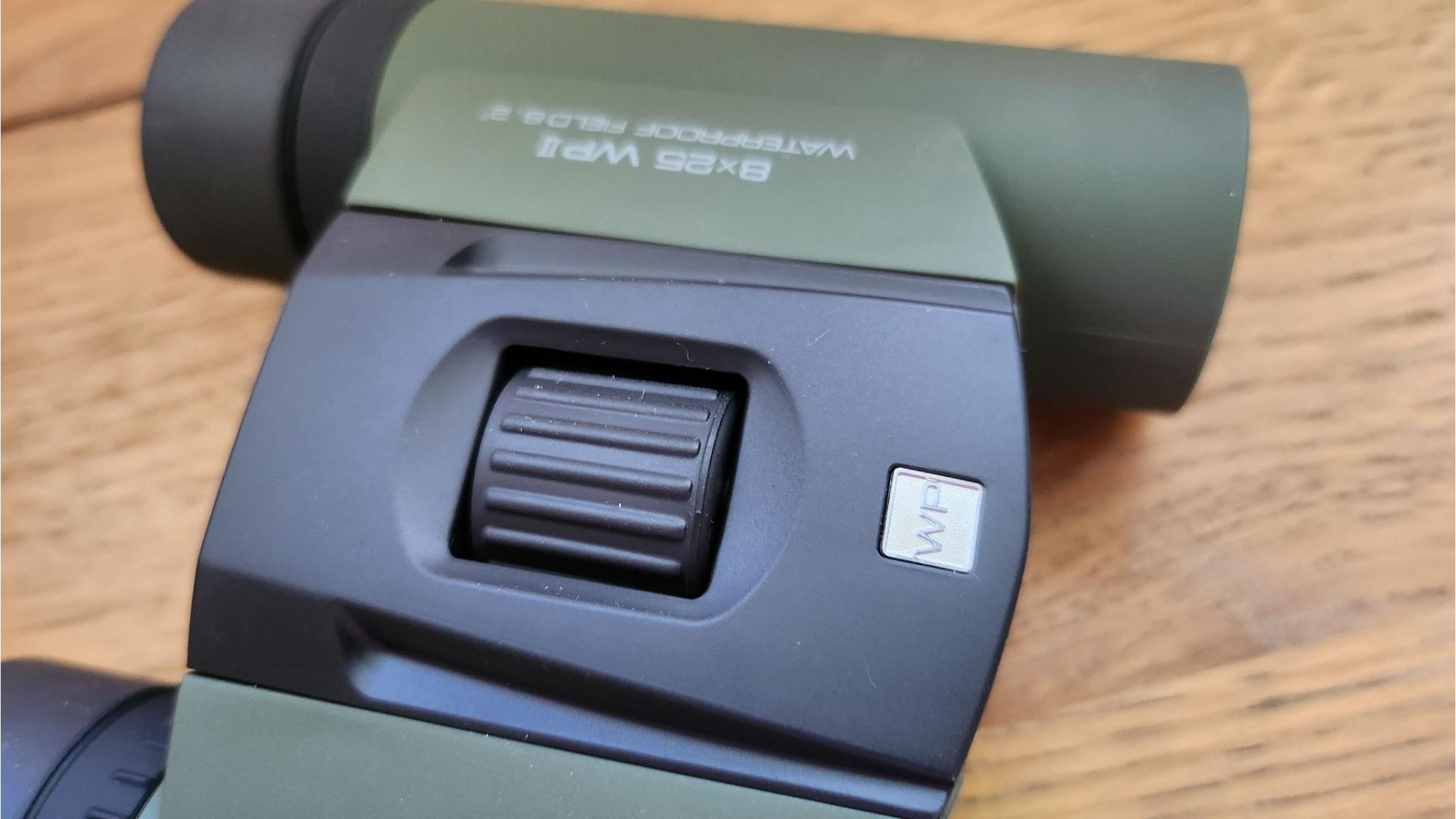
- Smooth operation of focusing wheel for small adjustments
- Easy-to-use twistable eyecups
- Low light-gathering prowess
Given the small aperture of the objective lenses, the Olympus 8x25 WP II isn't able to gather a great deal of light, which hinders the ability to see far-flung galaxies and some of the fainter nebulas of magnitudes dimmer than +6.0.
Carrying case
Objective lens caps
Neck strap
Double eyepiece cover
Despite this though, they deliver pleasing views of superb color fidelity, provided the skywatcher is mindful of the binocular's capabilities.
The functionality of the Olympus 8x25 WP II is pleasing. The focusing wheel turns smoothly, enabling our chosen targets to be brought into clear focus with ease, while minute movements could also be made for higher accuracy in achieving sharper views.
The twistable eyecups were a delight to use, with no sticking or exertion required in pulling them out for observing sessions. They folded in just as neatly when it was time to pack the binocular away.
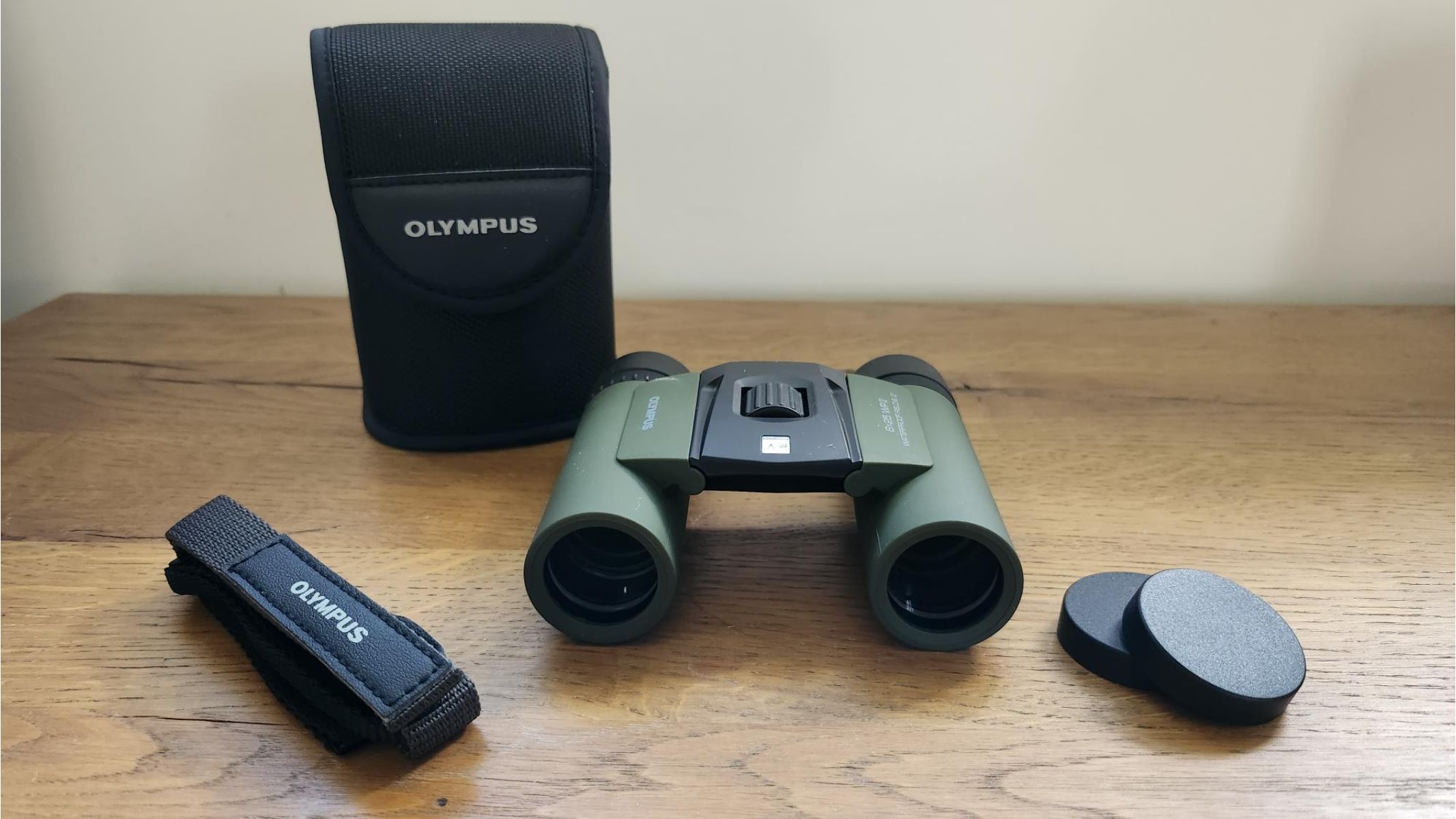
A neck strap is included for those needing to quickly achieve magnified views — without fumbling to unpack this flexible piece of kit. A grooved central knob for focusing makes this beautifully designed binocular a winner for observers wanting to just get viewing without any complications.
Most importantly, manufacturer Olympus boasts a BaK-4 porro prism design for their WP II model, and fully multi-coated lenses — the objectives of which are 25mm in diameter — for superb brightness, clarity and contrast whatever the observer chooses to magnify on their travels. Meanwhile, the eyepieces are protected with caps when not in use. We advise storing these caps in a safe place during your observations; they are easy to lose without being tethered to the Olympus 8x25 WP II.
Should you buy the Olympus 8x25 WP II binocular?
We consider the Olympus 8x25 WP II as an all-arounder for those looking to dabble in a wide range of observing, whether that's during the night or day. However, it's important to note that this binocular — due to its small aperture, and therefore lacking in light-gathering prowess — isn't suited to dedicated skywatching, particularly when fainter targets are concerned. Instead, we recommend looking for binoculars of at least 10x50 magnification and aperture, with some respected models — including those manufactured by Celestron, Nikon, Orion and Helios — can be found reasonably priced at a variety of trustworthy stockists.
Suppose you're keen to add the Olympus 8x25 WP II to your arsenal. In that case, we recommend it as a trustworthy companion for wildlife enthusiasts and for those who love nothing more than trekking, while also effortlessly taking in the views of their surroundings. We experienced a very good optical system that offers fair to good views of some night sky targets, however, the binocular is best suited to casual skywatchers. Be warned: If you are an astronomer who is serious about taking your observations to the next level, you will find yourself upgrading the Olympus 8x25 WP II within a year.
Externally, the binocular didn't fail to impress: The build is superb, with no cheaply made parts. The barrels are comfortable to hold, while the lightweight design ensured that our arms weren't aching and shaking as we toured our surroundings. The neck strap could do with an upgrade, and users should be aware that the lens caps are easy to lose since they aren't attached to the binoculars' barrels.
If the Olympus 8x25 WP II binocular isn't for you
If the Olympus 8x25 WP II binoculars aren't for you, you'll find a lot of excellent binoculars in our guides to the best binoculars and best compact binoculars. If you're looking for a binocular that fits neatly in your pocket and is able to withstand harsh weather conditions, while still offering exquisite views of high contrast and clarity, we advise trying the Bushnell H20 8x25 or Celestron UpClose G2 10x25.
Replace the below with relevant buying guides/deals hubs on our site:
Best binoculars
Best binocular deals
Best nightvision binoculars
Best monocular
Best binoculars for kids
Best compact binoculars
If you're keen to collect as much light as possible for superb views of galaxies, nebulas, planets, the moon and double stars, we recommend the Celestron 7x50 Cometron for an affordable step up in aperture, or the Celestron SkyMaster 25x100 and Celestron SkyMaster 12x60 for seasoned skywatchers with a healthy budget. Remember, the larger the binocular, the heavier they will be, so it is worth investing in a tripod and mount for shake-free and comfortable views.







